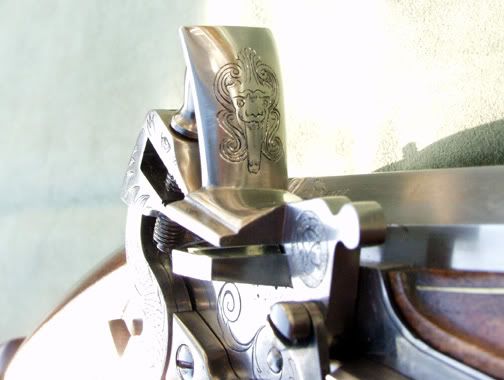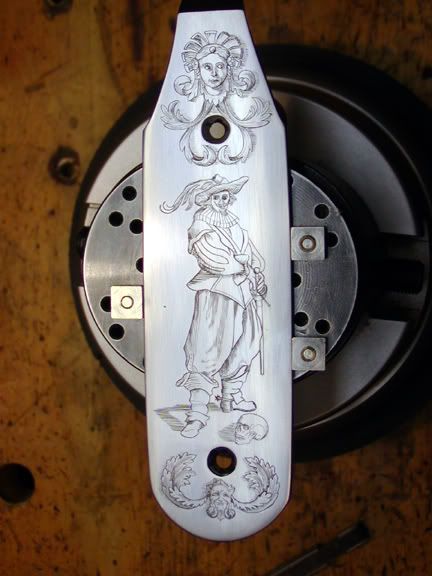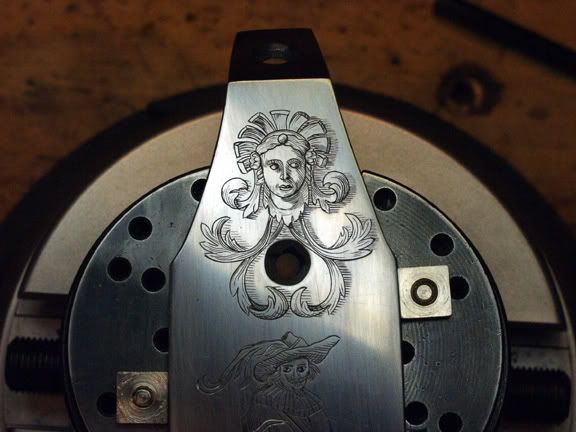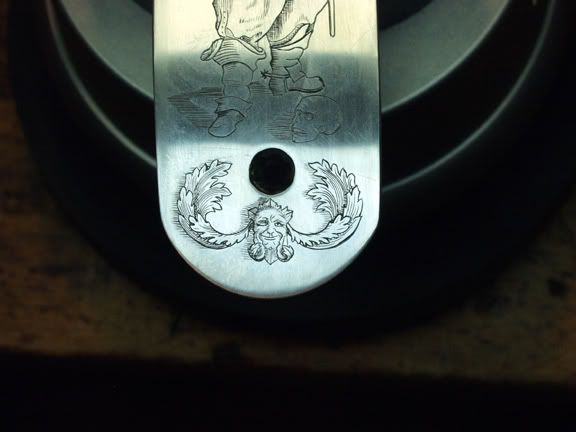Hi,
Thanks everyone for your compliments. I am glad you like and enjoy the photos.
Ricky,
I never build a gun just for show. They are to shoot and this one does that surprisingly well and is also very sturdy. A few dents, scratches and bumps will just give it soul. One reason that I can occasionally help you and others with questions about firearm identification is that I keep a large library of reference information as well as inspect every original gun I can. In addition, I keep a large library of information concerning the decorative arts through the centuries. That is actually my true love and I find that guns are wonderful but challenging canvases on which to recreate that art. You complimented me by saying the decoration is so appropriate and I thank you for that because that was exactly my intention. I am working to keep those art forms alive. The late mannerist and early French Baroque designs are very like those produced by the LeBourgeoys family of gunmakers and artists in NW France during the first decades of the 17th century. You probabably recognize the name Marin LeBourgeoys as a possible inventer of the true flintlock. Symbolic designs and images that tell stories were commonly applied to guns at that time. For example, the butt plate engraving shows a soldier facing death. The face of the soldier is actually a vague image of France's King Henry IV. He is preparing to meet death (the skull) while thinking about the achievements and treasures he obtained in life (the woman's portrait). But death is the great leveler (a common theme during the 16th and 17th centuries) that happens to all. The winking greenman at the bottom represents regeneration and rebirth giving the parable hope and a happy ending. The happy ending is because it is French. If it was a German design, the poor schmuck would be shown burning in hell. Apples were (and are) grown throughout Normandy and the wood was often used for stocks such as the wheellock in my photo. I did not have a suitable apple blank so used cherry and stained it accordingly. For me, paying attention to those details turns every gun project into an historical adventure and turns this hobby into an avocation.
dave










